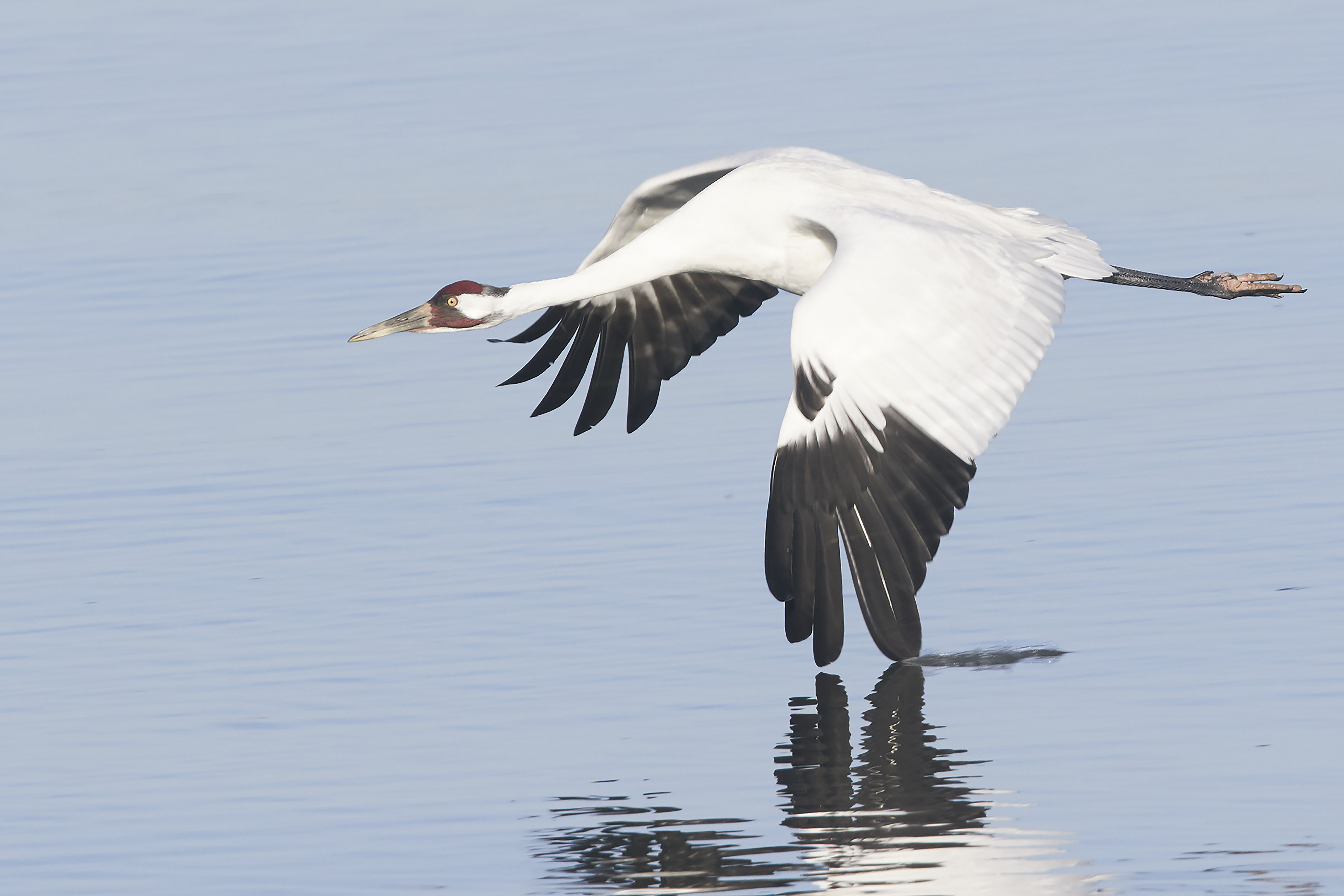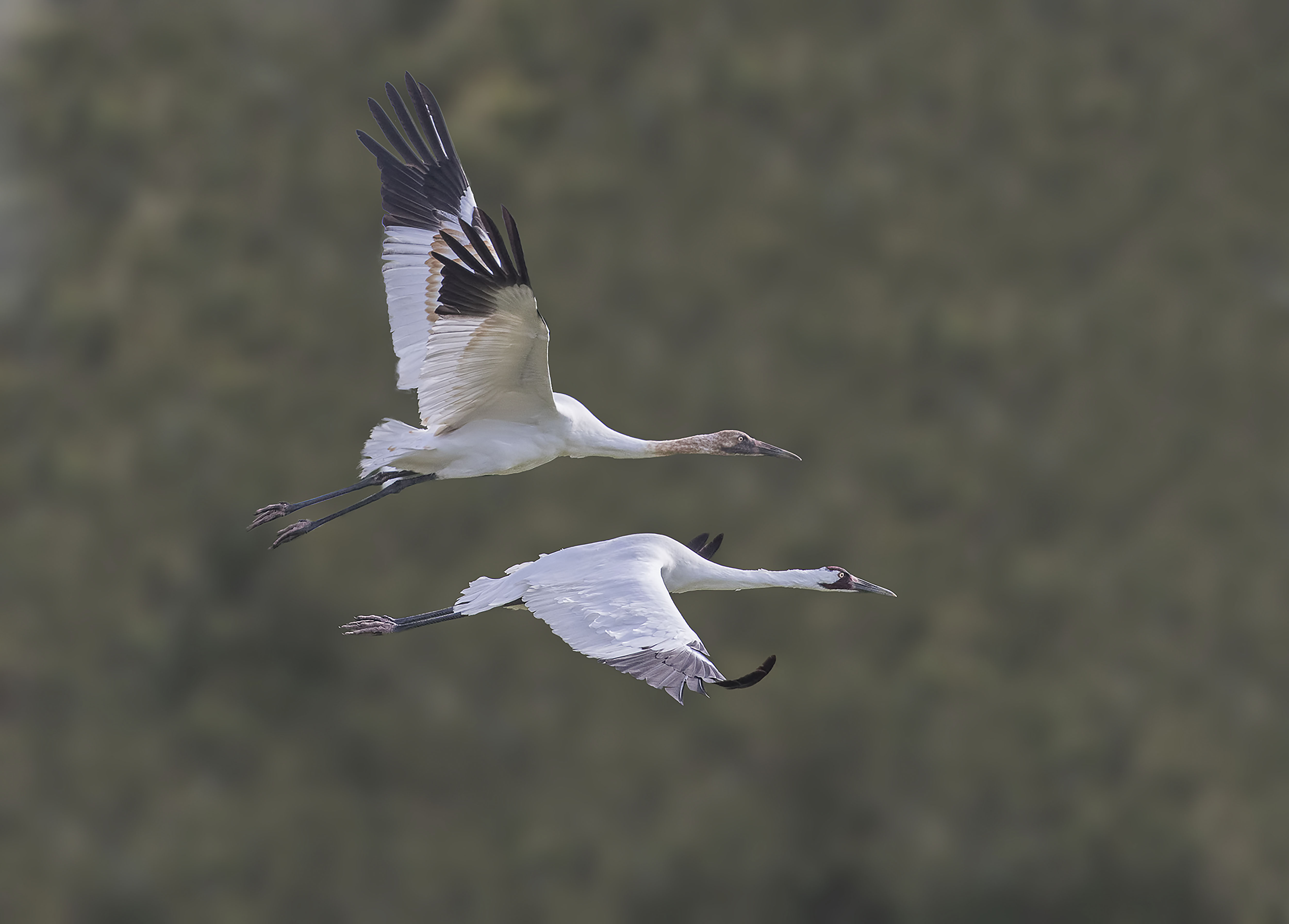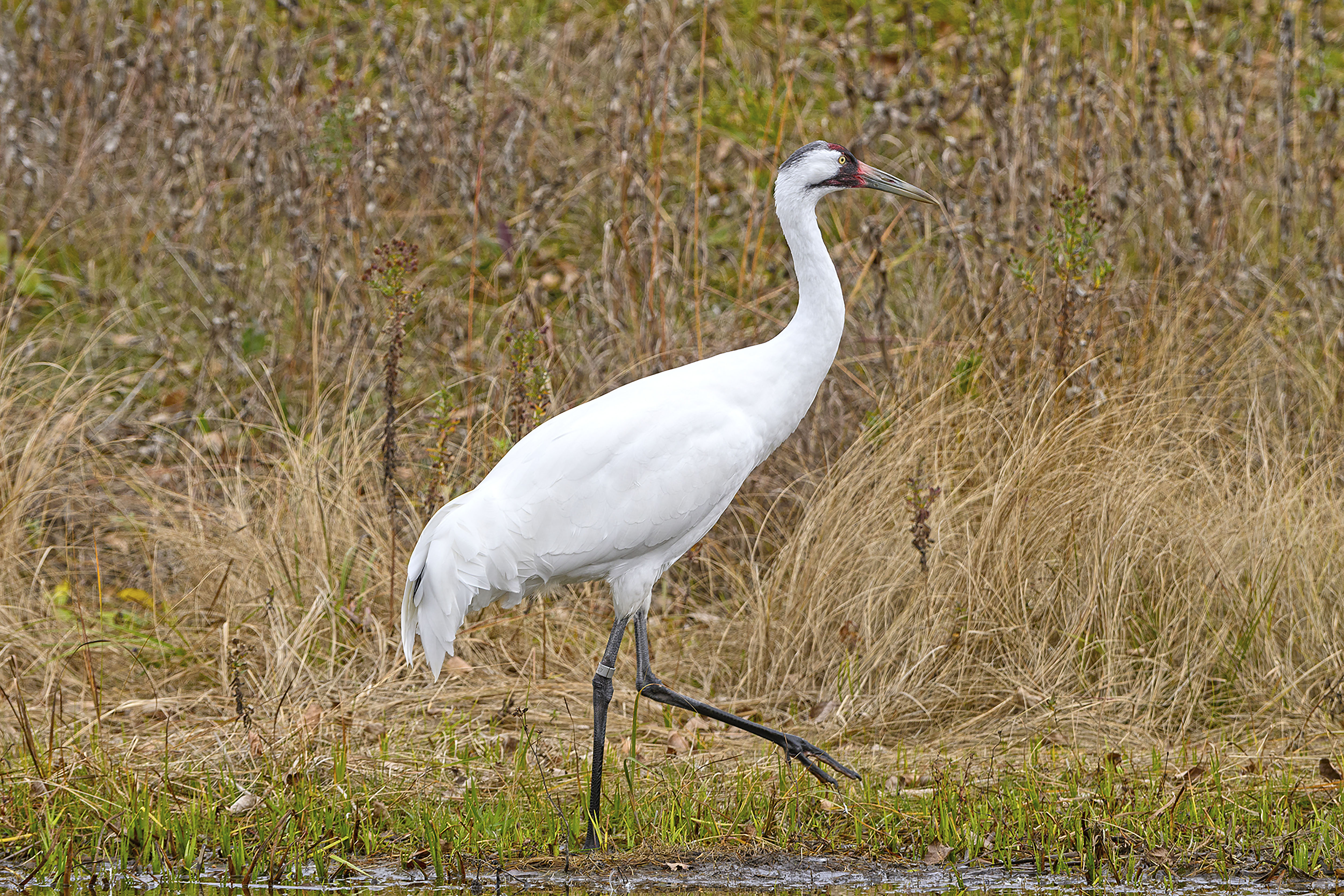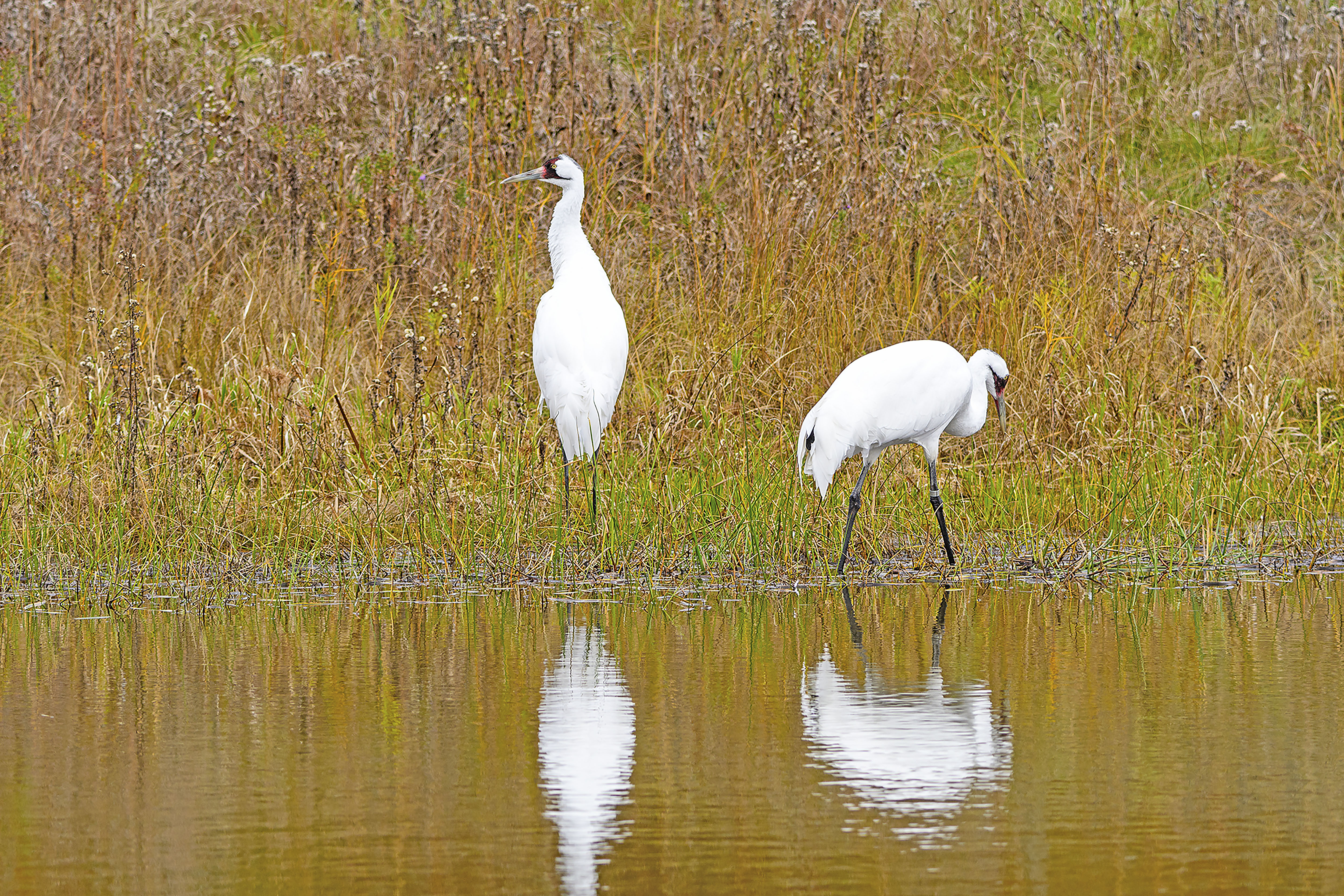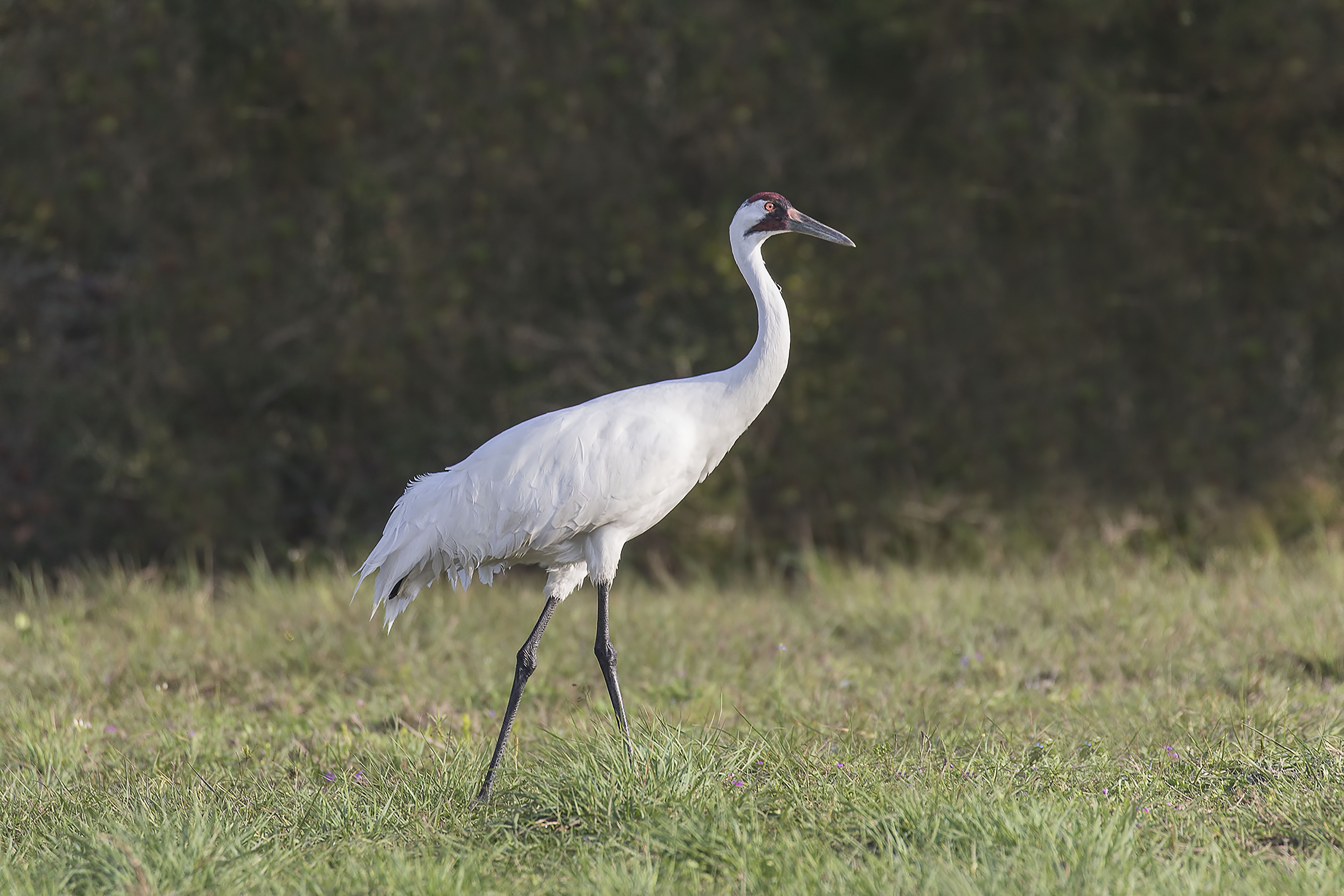Whooping Crane
(Grus americana)
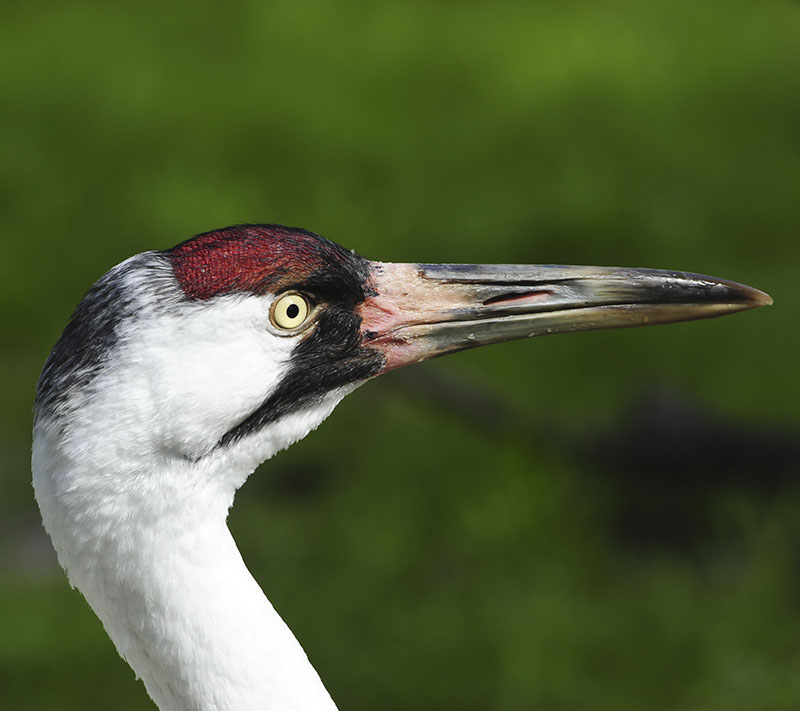
Northern Prairies
STATISTICS
Weight up to
7.3kgs
Lifespan
30 Years
Wingspan
2.3 meters
Flies - Glides - Diurnal - Migratory - Solitary - Territorial
The Whooping Crane is the tallest North American bird and has captured public imagination through its success story as one of the best-known conservation stories on the continent. After almost becoming extinct due to unregulated hunting in 1941, the Whooping Crane has seen a well-coordinated, but limited, recovery. Named for its signature whooping sound, it sends out “guard calls” to warn its partner of potential dangers. Pairs will also engage in a rhythmic “unison call” after courtship, in the early morning or when defending their territory. It is one of the only two crane species found in North America and can be spotted by the red and black markings on its face as well as the black tips on its wings. It prefers open habitats close to water. Pairs are monogamous and pairs form at around 2 – 3 years of age through a variety of courtship behaviours including dancing, bowing, bouncing and wing flapping. Whooping Cranes breed once a year and the female lays between 1 – 3 eggs. The incubation period is 30 – 35 days and both male and female share incubation responsibilities. This species is omnivorous and eats a variety of plants and animal species. Primary foods in winter include Blue crabs and Wolfberry fruits. They also feed on grasshoppers, snakes, mice, berries, clams and snails.
BIODIVERSITY BENEFIT
Parasite Host
THREATS
Collision with Powerlines
Powerlines are unmarked and collision is a growing problem.
Wind Turbines
Anticipated placement of wind turbines will decrease stop over opportunities for migrating birds.
Predation
Eggs and young hatchlings are preyed on by birds and mammals.
Drought
Dramatically impacts on production of nesting grounds.

383
Left in the Wild
Sources: Animaldiversityorg; IUCNredlist; EOL; Wikipedia
PROTECT THE WILDARK 100
